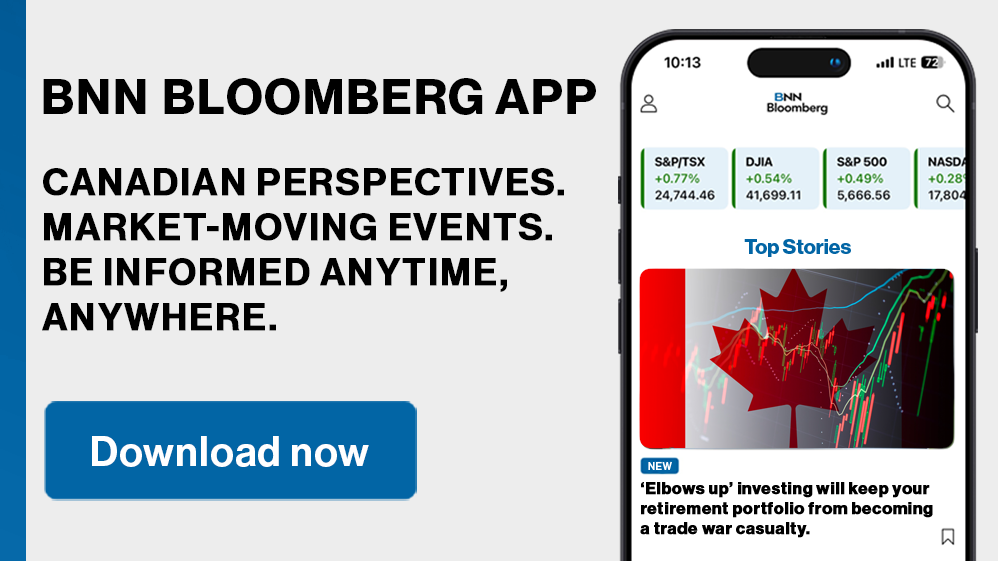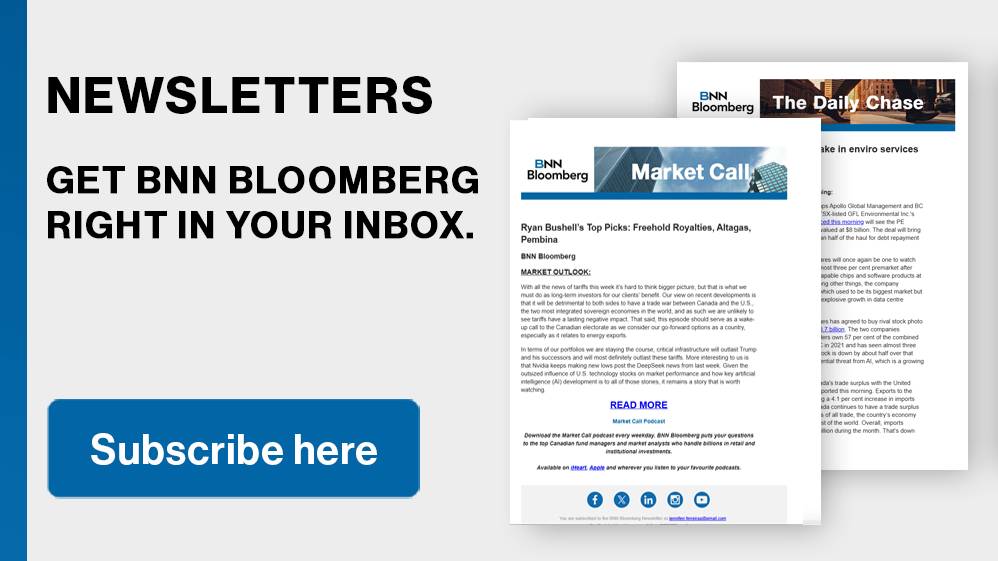Experts say investors and businesses should brace for continued volatility after U.S. tariffs on Canada were put on hold, with one analyst saying he expects tariffs to still come at some point.
U.S. President Donald Trump and Prime Minister Justin Trudeau were able to come to some kind of mutual understanding during a phone call Monday, resulting in tariffs being put on hold for 30 days. The pause came after Trudeau said Canada would expand its $1.3 billion border protection plan. Brooke Thackray, research analyst at Global X, said in an interview with BNN Bloomberg Tuesday the issue “isn’t done yet” and he thinks there will be more market volatility and uncertainty regarding tariffs going forward.
“I think the volatility will increase, and that’s going to shake a lot of investors out. You’re going to see a lot of fear being driven into the markets, in the equity market and also the fixed income market as well,” Thackray said.
The pause came after Trump signed an executive order on Saturday to impose a 25 per cent tariff on all goods from Canada that would have taken effect on Tuesday, with an exception for energy which would face a 10 per cent tariff.
Barry Schwartz, a partner and portfolio manager at Baskin Wealth Management, said in an interview with BNN Bloomberg Tuesday that investors should get used to volatility of this kind as “the next four years are going to be a roller coaster.”
“These are the conversations that we’re going to have with clients, and we’ll have to calm them down, and I know the right things to do. Own good companies and be patient,” he said.
Thackray highlighted the Chicago Board Options Exchange’s CBOE Volatility Index (VIX), a tool used by traders to measure volatility, which spiked Monday morning on tariff fears but later came back down.
“This really comes back to that you can’t really panic in the moment because you would’ve been battered around all over the place,” he said.
What’s next?
Thackray also said he doesn’t think tariff issues between Canada and the U.S. are over and predicts tariffs of some kind to take shape.
“I think this isn’t over…I think this is just a pause here and maybe we end up with tariffs that aren’t 25 per cent,” he said.
“Maybe they’re 15 per cent, maybe they’re 10 per cent, maybe they’re five per cent. I think there’s going to be tariffs down the road at some point. Trump has basically also said on the other side that he wants to use tariffs as a revenue generating tool.”
David Detomasi, professor of international business at Smith School of Business, said in an interview with BNNBloomberg.ca Tuesday that Trump knew that from an economic perspective, “these tariffs were a bad idea.”
“But I do think he believes that the threat of importing tariffs or the actual execution of putting on tariffs, is a viable tool to compel governments to do what he thinks they ought to in a variety of noneconomic areas,” he said.
Detomasi added that he doesn’t think the pause on tariff discussions will be the “end of the story.” He said Trump most recently used the threat of tariffs to get border changes that were likely to come anyway.
“But I do think he’ll pull out the tariffs again in a month or two months, or six months when he wants something else from us,” Detomasi said.
‘Forever changed’ trade landscape
As tariffs have been put on hold for 30 days, Charmaine Goddeeris, the director of BDO Canada’s customs and international trade practice, said in an interview with BNNBloomberg.ca Tuesday that she is advising clients not to take their “foot off the pedal in contingency planning.”
“I believe that the trade landscape has forever changed now, and companies need to realize that and put in solid plans to manage their business and mitigate their costs going forward,” she said.
According to Goddeeris, supply chains rely on predictable and efficient customs processes, which are disrupted by tariffs.
“It is imperative that businesses really get a handle on what their supply chain looks like right now, what the duty and tax impact is, and pressure test, let’s take a look at how much your bottom line can withstand, and then do some planning from there,” she said.
Detomasi said that his advice to Canadian businesses would be to become less reliant on the U.S.
“I think we need to think about how we can build internal strengths ourselves to try to break that assumption that the U.S. will always be there for us,” he said.

